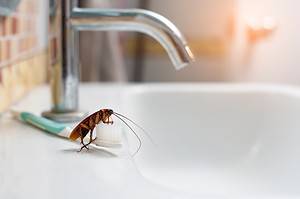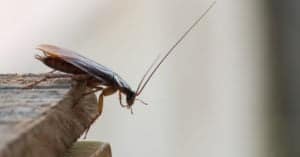Many people would feel overly irritated at the sight of cockroaches, while others would have their hair stand on edge or their skin crawl at the mention of them.
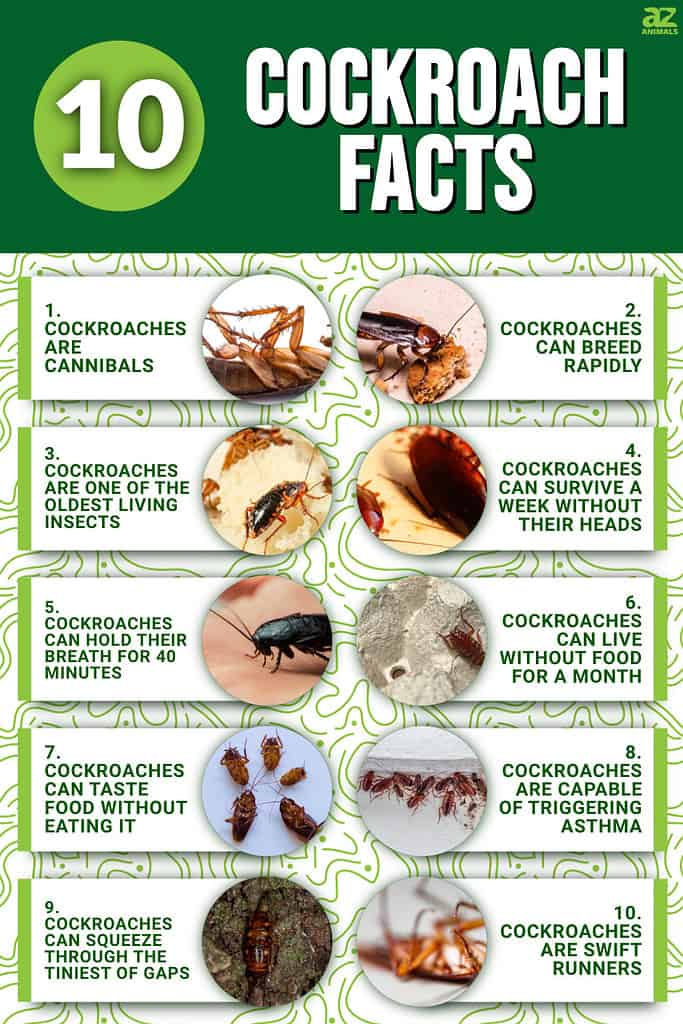
The reason is not far-fetched; these little crawling insects are mostly recognized with dirt and filth (in places like latrines and garbage dumps), making them carriers of disease transmitted through the contamination of human food.
Most people know cockroach infestations’ health and safety risks, including asthma and other allergies triggered by cockroach allergens. However, some incredible facts about cockroaches may be unknown to a broader audience.
Cockroaches, as resilient pests, exhibit some characteristics and odd survival tactics. Here are ten incredible facts about cockroaches:
1. Cockroaches are cannibals
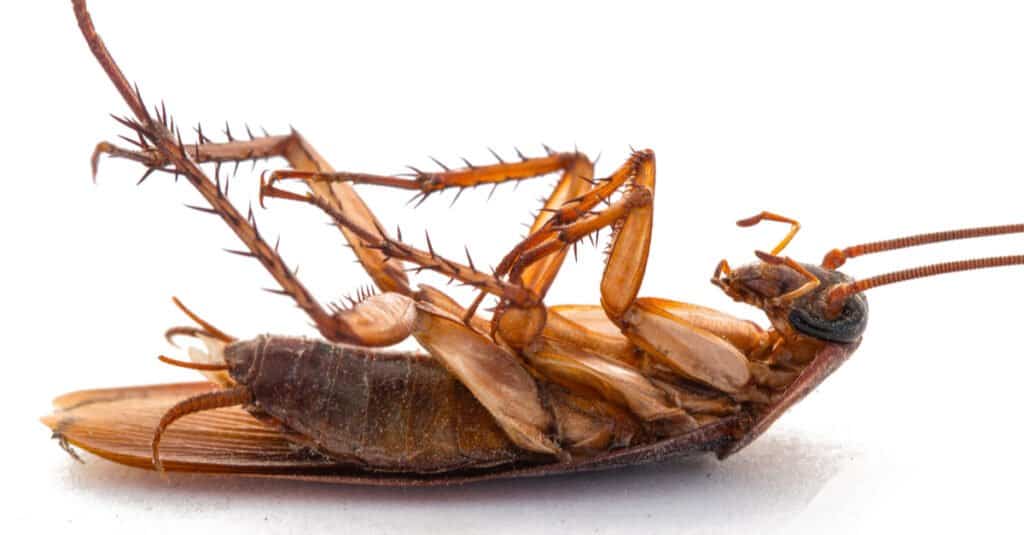
Cockroaches are opportunistic eaters, willing to eat whatever is available.
©pixfly/Shutterstock.com
Whether or not you believe it, cockroaches are opportunistic eaters, willing to eat whatever is available. They eat anything from the best human food to even the worst imaginable things like leather, paper, garbage, and decaying organic matter.
To top it all off, cockroaches will not hesitate to eat each other when food becomes hard to find. This act of cannibalism is believed and attributed to food and population. When they infest in large numbers and overwhelm food sources, cockroaches will turn to cannibals as a food source and to control population size.
2. Cockroaches can breed rapidly
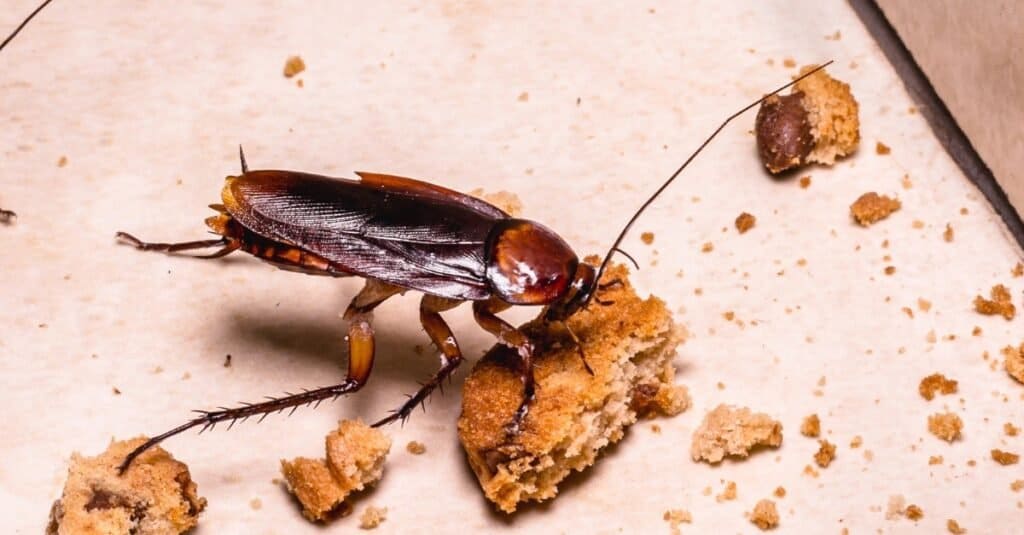
An infestation of cockroaches indoors, with insects on the floor eating leftover food.
©iStock.com/RHJ
Another interesting fact about cockroaches is their ability to breed rapidly. Female cockroaches produce their eggs in an ootheca (an egg capsule) and do not require a mate to lay their eggs.
In suitable conditions, female cockroaches can produce up to 400 eggs in a lifetime at a 20-30 egg rate per day. This, however, depends on the breeding conditions and types of cockroaches.
For cockroaches, the female gestation period is commonly between 30 and 60 days before hatching into its next stage, a nymph. On average, the life cycle of a cockroach ranges from one month to about two years.
3. Cockroaches are one of the oldest living insects
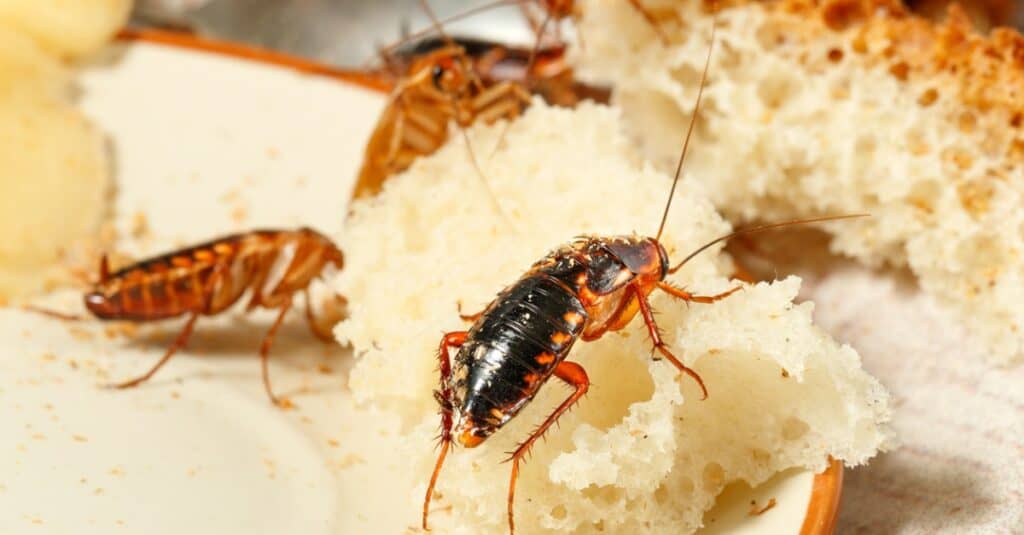
©iStock.com/tenra
Besides breeding rapidly and covering large areas, cockroaches are one of the oldest known living insects. A shred of evidence suggests that cockroaches have been in existence for millions of years–a very long time.
Even studies and scientific findings reveal through fossil evidence that cockroaches have lived for a very long time. Some research shows that the oldest fossil discovered was about 300-350 million years old.
4. Cockroaches can survive a week without their heads
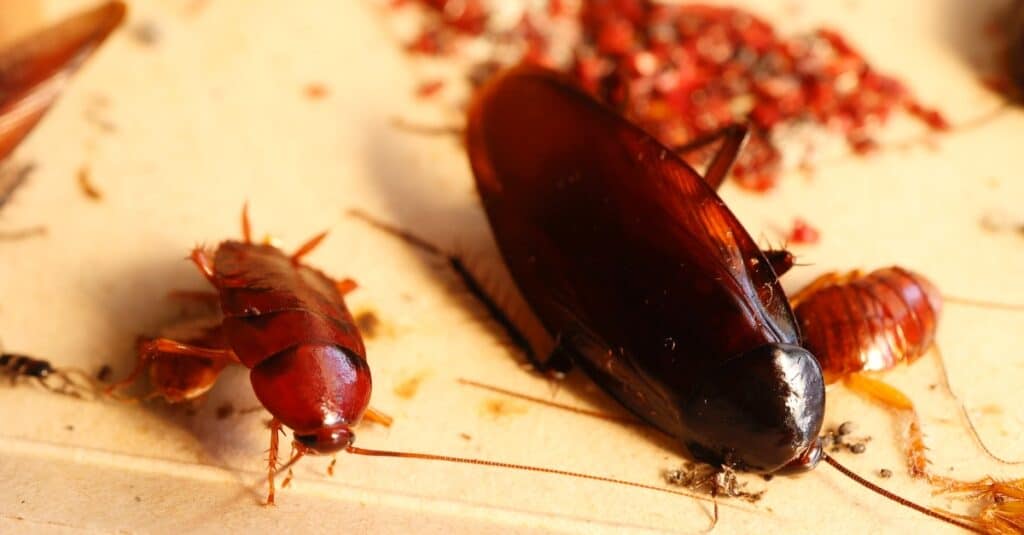
Cockroaches do not need their mouths to breathe; they use their body.
©iStock.com/Yusuke Ide
Have you ever killed a cockroach and expected it to die immediately? Or have you ever seen a cockroach still moving around after cutting off its head?
Yes, it could leave you with some thoughts. Here’s the answer you need: cockroaches don’t die by losing their heads–at least not instantly. Without undue exaggeration, cockroaches can survive for up to a week without a head.
This is because cockroaches do not need their mouths to breathe; they use their body. Their respiratory system uses spiracles located on their body’s sides to inhale and transport oxygen. Most cockroaches without heads would rather die of dehydration or other factors than lose their heads.
5. Cockroaches can hold their breath for 40 minutes
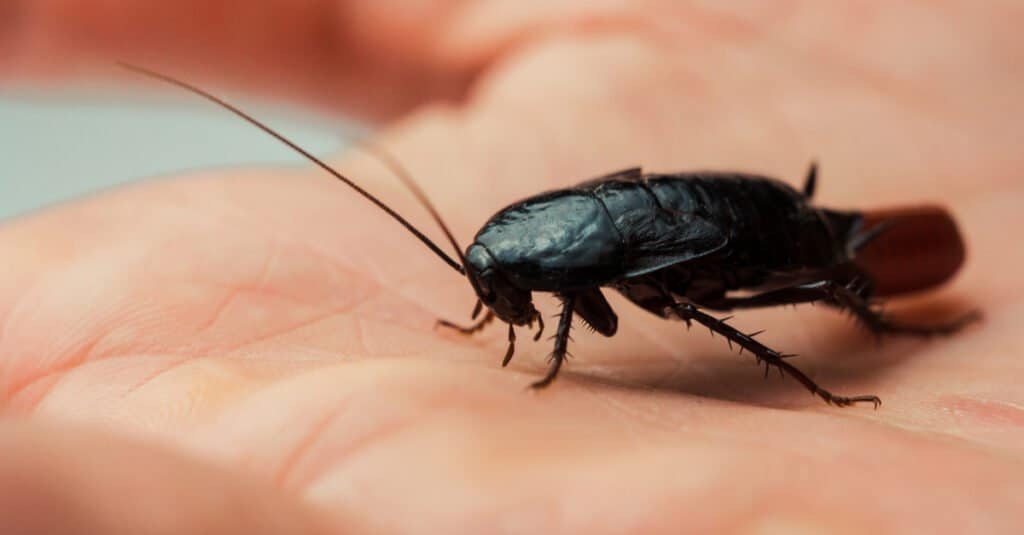
©Yuliia Hurzhos/Shutterstock.com
Apart from their ability to stay alive without a head for a week, did you know that cockroaches can hold their breath for up to 40 minutes? Various studies and scientific research have backed this seemingly unbelievable fact. According to studies, cockroaches can hold their breath for up to 40 minutes while surviving underwater for 30 minutes.
The ability to hold breath over a long period is believed and attributed to the process of regulating water loss. Cockroaches don’t breathe with their mouths like humans. They instead use spiracles (small tubes in their body).
They also use these spiracles to transport water vapor out of their body. Consequently, cockroaches keep the tubes shut if they need to conserve water.
6. Cockroaches can live without food for a month
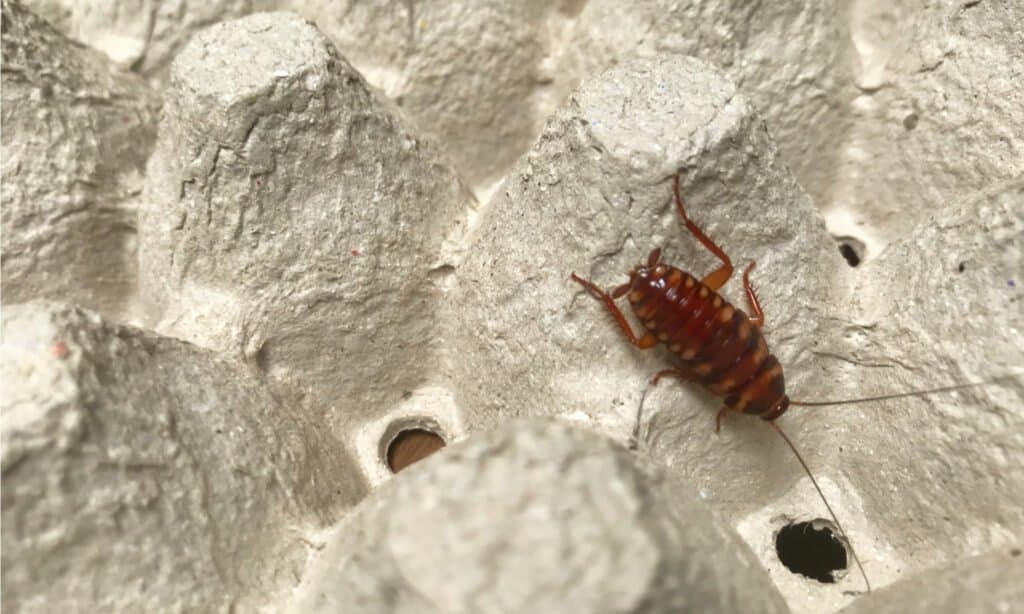
Brown-banded cockroaches get their name from the two light bands they have across their dark brownish bodies
©Freedom my wing/Shutterstock.com
Dying of starvation is rarely a case for these cold-blooded insects because they can live up to a month without food. Cockroaches have bacteria living in them, and these bacteria help them to survive. Cockroaches inherit these bacteria in their bodies genetically.
These bacteria play a significant role in the survival of cockroaches as they feed off their hosts and, in return, provide vitamins and amino acids for their hosts’ survival. That is why cockroaches can feed on almost anything and still get the necessary nutrients to survive.
7. Cockroaches can taste food without eating it
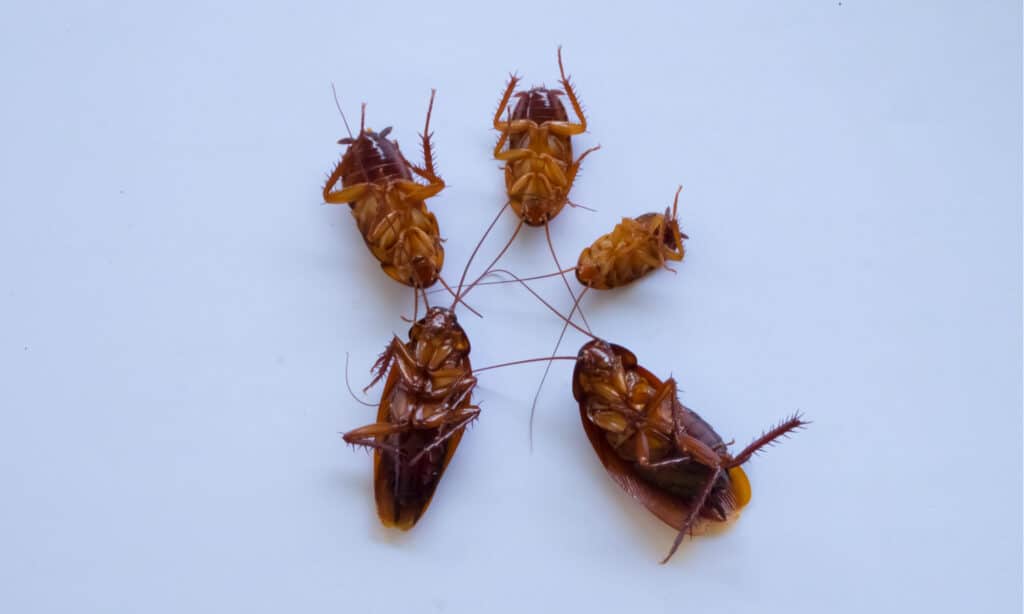
Cockroaches have little-tasting hairs found all over their wings, feet, legs, and around their mouthparts.
©Nainong/Shutterstock.com
Unlike humans and other wild animals, these little cold-blooded insects lack tongues with taste buds. Notwithstanding, they have a mechanism with which they taste. Cockroaches have little-tasting hairs found all over their wings, feet, legs, and around their mouthparts, which function the same as taste buds on the human tongue. With these, they detect the taste of bitter, sweet, sour, and chemical substances in food.
8. Cockroaches are capable of triggering asthma

©Naamtoey/Shutterstock.com
According to studies, cockroaches are linked to asthma and other allergy symptoms, which is unsurprisingly traceable to their filthy dwellings and a keen interest in the consumption of decaying organic matter.
Their saliva, fecal droppings, and shed skins are known sources of potent allergens responsible for asthma or bouts of rhinitis for some people when exposed to them. Besides allergies, cockroaches are known carriers of a wide variety of bacteria that can negatively impact our health.
9. Cockroaches can squeeze through the tiniest of gaps
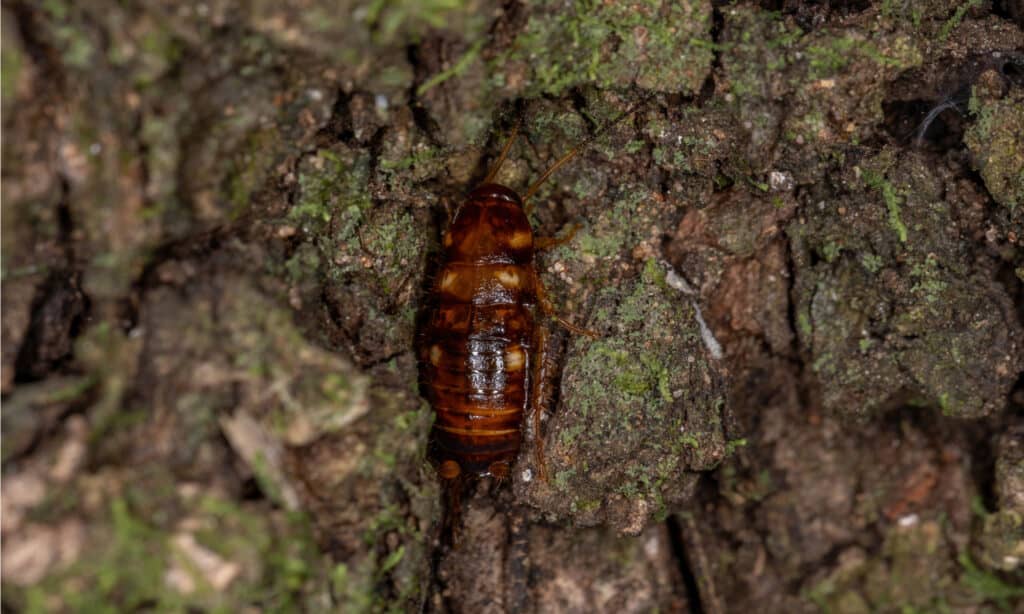
Cockroaches can squeeze through the smallest openings and cracks, just like rats and mice.
©Vinicius R. Souza/Shutterstock.com
Many people wonder if cockroaches can truly squeeze themselves through small spaces. Yes, they can. Cockroaches can squeeze through the smallest openings and cracks, just like rats and mice. Little wonder they are mostly found lurking around tiny homes in homes and sewage.
Thanks to their amazingly flexible exoskeletons (which they can flatten while splaying their legs sideways), they can fit through any gap as small as a quarter of their body height.
10. Cockroaches are swift runners

Nobody likes ’em, but they’re still around!
©iStock.com/panida wijitpanya
Cockroaches are insanely quick to eschew danger. Since they are small and consequently prey for a large number of predators, their primary defense mechanism is running–running as fast as possible. While they run, they scamper over small obstacles and uneven terrain with great speed. Despite their small size, they can run as fast as 1.5 meters per second. This means they can quickly spread diseases and cause severe allergic reactions throughout a property.
The photo featured at the top of this post is © skydie/Shutterstock.com
Thank you for reading! Have some feedback for us? Contact the AZ Animals editorial team.



